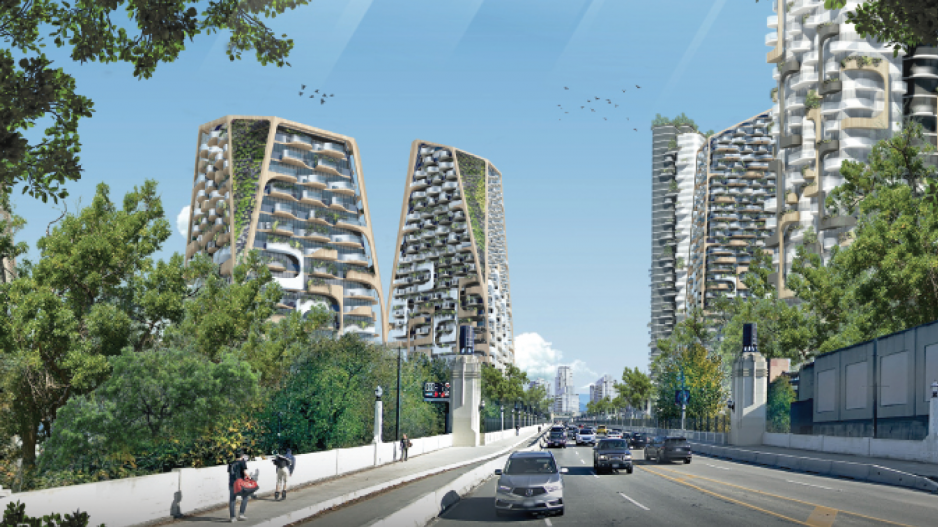This article was originally published in the March 2020 issue of BIV Magazine.
Twenty-two years ago a Canadian-Finnish couple bequeathed their five-acre farm in Coquitlam to the Finnish Canadian Rest Home Association (FCRHA).
This January, after a unique agreement between the non-profit association and one of British Columbia’s largest real estate developers, the FCRHA was handed the keys to a 67-unit seniors housing complex where rents are affordable to households with incomes of $33,600 or less.
Intracorp built the seniors centre in exchange for half of the farmland, on which it is building family-sized four-bedroom homes in the first phase of a 73-unit townhouse development.
The 3,600-member Squamish Nation, which in the latest fiscal year posted $95 million in revenue that included $32 million in real estate income, recently approved developing an 11-acre site it owns near downtown Vancouver in a joint venture with private developer Westbank Corp. Squamish figures the residential-weighted mixed-use project could generate from $10 billion to $20 billion for its nation over the next few decades, making it one of the wealthiest Indigenous communities in Canada.
Metro Vancouver’s tight rental vacancy rate would also be much worse than its current 1.1% if it were not for private condo investors, who now account for 69,967 rentals – including 11,000 condos that were added to the region’s rental stock in 2019 – compared with a total of 1,464 purpose-built rental apartments completed last year, according to Canada Mortgage and Housing Corp.
But the transformative power of real estate investing goes beyond improving the lives of marginalized citizens. It is the dominant force driving B.C.’s economic growth.
Real estate accounted for 18% of B.C.’s gross domestic product (GDP) last year, according to Statistics Canada. When construction is included, real estate is an economic behemoth that now represents 26% of the entire provincial economy. This compares with a 4% GDP contribution from B.C.’s once-dominant resource sector.
Greater Vancouver home sales alone tallied $25.4 billion in 2019, and that was considered a slow year.
In the commercial sphere, office and industrial construction in Metro Vancouver built 11 million square feet in 2019, second only to the Greater Toronto Area. An additional four million square feet of retail space is being built in Metro Vancouver.
“There are many reasons for optimism heading into 2020,” Jason Kiselbach, senior vice-president and managing director for CBRE, told an outlook panel at the 2019 Vancouver Real Estate Strategy & Leasing Conference held last fall.
At 2.4%, Vancouver’s downtown office vacancy rate is the second lowest in North America. Metro Vancouver office vacancies are 3.8%, the lowest in Canada, which has an urban average vacancy of 11%, Kiselbach noted.
Avison Young reports that downtown Vancouver lease rates for prime office space are now in the range of $55 to $95 per square foot gross, compared with $50 to $90 in downtown Toronto and a maximum of $45 per square foot in central Montreal.
In the first half of 2019, $2.1 billion worth of office space was sold in Metro Vancouver – a near-record high. The billion-dollar sale of the Bentall Centre office complex in downtown Vancouver was soon followed by an announcement from its U.S. buyers that it will expand with a 500,000-square-foot commercial tower. Reliance Properties, which is building a new office tower on Burrard Street with the Jim Pattison Group, plans to construct another new 29-storey office tower downtown.
Industrial vacancies, meanwhile, have plunged to 2.5% across Metro Vancouver, a near-record low despite the biggest annual addition of new supply in 10 years.
“The challenge for Vancouver is the lack of product, not purchasers,” states a December 2019 report on Metro Vancouver real estate from Altus Group.
Metro Vancouver’s real estate markets are forecast to match the pace seen in 2019, Altus concludes, “with some upside potential for new home sales.”
Real estate’s blast radius extends far beyond Vancouver.
In Chilliwack, the opening of the $200 million Molson Coors Brewing Co. brewery, which was relocated from Vancouver, helped make the eastern Fraser Valley community the Lower Mainland’s second most active industrial market, according to Avison Young, with the region’s lowest vacancy rate at 0.4%.
On the retail front, PCI Developments has purchased the Cottonwood Mall and is in the midst of a $30 million expansion. Work also begins this year on the $63 million remake of the Chilliwack Mall that includes three residential towers.
In Kelowna, 12 new multi-family towers are under construction, including the tallest tower between Vancouver and Calgary. Kelowna added 312,600 square feet of new office space in December 2019, six times more than in 2018. The latest new buildings – totalling more than 300,000 square feet – are 100% pre-leased.
With 3.9 million square feet of office space in the city, less than 200,000 square feet is vacant, according to Colliers International. Kelowna’s industrial vacancy rate is at an all-time low of 0.7%. This has attracted nearly 180,000 square feet of new construction and driven prime industrial land prices to $1.3 million an acre.
In Prince George, a near-record pace of construction is credited for the city’s forecast GDP growth rate of 1.7% this year, according to the Conference Board of Canada. Indicative of what is happening in much of B.C., the board contends that real estate will be Prince George’s fastest-growing industry in 2020, expected to grow by a rate of 2.7%.
This article was originally published in the March 2020 issue of BIV Magazine. The digital magazine can be read in full here.




